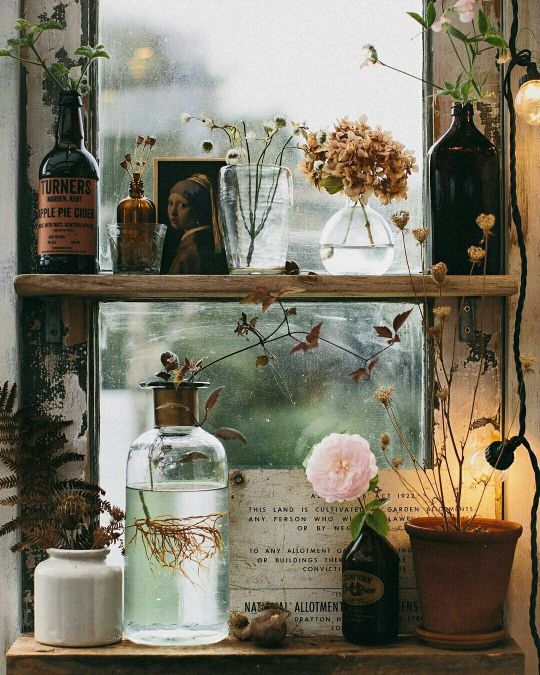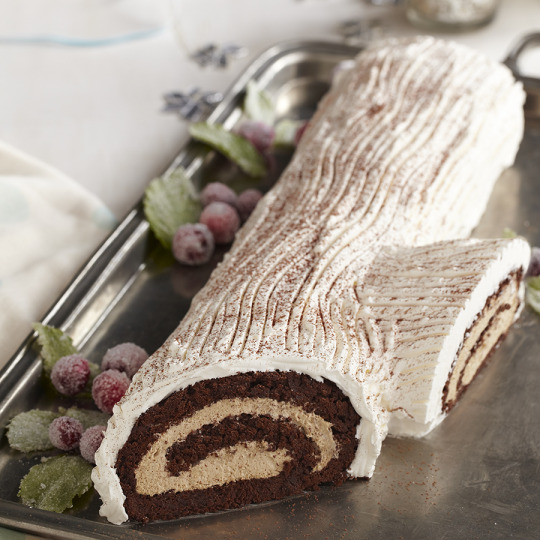Sιɳɠιɳɠ Mσυɳƚαιɳ Wιƚƈԋ Private Blog and Mirror Book.
Last active 2 hours ago
Don't wanna be here? Send us removal request.
Text
Sweet smells of Yule
2 teaspoons whole cloves 2 bay leaves 2 cinnamon sticks a handful of pine needles 1 -2 pieces of orange or lemon rind 2 cups water
Put all ingredients in a saucepan. Bring to a boil and then simmer all day if you wish. Add water as needed. Refrigerate to reuse.
↢ Back to Yule - Winter Solstice
3K notes
·
View notes
Quote
O! Mighty goddess, in silvery ice, watching over us as we sleep, a layer of shining white, covering the earth each night, frost on the world and in the soul, we thank you for visiting us. Because of you, we seek warmth in the comfort of our homes and hearths.
- Prayer to the Winter Goddess (via thebluechicory)
360 notes
·
View notes
Text
Yule: A Midwinter Celebration

Posting this into the heathen yule tag as a few edits have been made since I originally posted it and Yule is coming up.
What is Yule?
Yule, or Jól as it was spelled in Old Norse, was the Midwinter celebration of the Germanic peoples before Christianity had spread far into those regions. The Norse year was divided up into two season: Summer and Winter. Both of these seasons had half-way celebrations which were considered to be the most important festivals of the year, those being Midsummer and Midwinter, though Midsummer appears to have come about post-conversion rather than having been a pre-Christian festival. Between the two, Midwinter (Yule) has been the most important, so much so that even beyond Scandinavia and the other Germanic regions it persists to this day. Though through conversion Yule was gradually replaced by Christmas, many of its traditions remained as the people who were converted kept them alive in their new religion. Traditions such as the Yule log, Christmas tree and others have remained, and the name Yule even persists in Scandinavian countries; for instance, the Swedish, Norwegian, and Danish words for Christmas are “Jul”, pronounced exactly the same as Yule. If you want to wish someone a merry Christmas in Swedish, just say “God Jul!” (Go Yool). In addition to the Scandinavian languages, the term Yule is represented in works describing the ancient Continental Germanic months. The festival of Yule is believed to have lasted three or so nights. During those nights the return of Sol, the sun goddess, was celebrated as the darkest days of the year were over.
In addition to celebrating the return of the sun, this time of the year was seen as sacred to the gods Thor and Freyr. Freyr being a god of fertility and Thor a god of the weather, these two had a lot of influence over the birth and growth of new life in the coming year. Odin was also celebrated during this time of year as the leader of the Furious Host (often misinterpreted as the Wild Hunt), which in Anglo-Saxon areas was thought to occur on Modranicht (Mother Night); one of his many names was also Jólnir, which can be translated as “Yule figure”. He is also commonly thought to have been a large influence on the legend and original appearance of Santa Claus. While leading the Furious Host, he rode upon his eight-legged horse by the name of Sleipnir, which has been theorized by some scholars as possibly giving rise to Santa’s eight reindeer. When carrots or other food were placed out for Sleipnir to eat, Odin would record the names of the generous people and replace the food with gifts. It’s thought that when the Vikings conquered Britain in the 8th and 9th centuries CE, their depiction of Odin in this time of year became the Father Christmas of the English.
Of course, while merriment was widespread at this time of year, there was also danger lurking in the cold dark of night. This time of the year was seen to give rise to an increase in spiritual activity. Trolls, draugr and other ill-spirits were seen to wander free more often during Yule, so it was not a good idea to be far out at night. While people would venture outdoors during the day and a little bit at night, they primarily stayed inside with company where it was considered to be safer.
The nisse, also known as tomten in Sweden, is recognized at this time of the year as well. Described as a very short, elderly looking, bearded man, much like the popular depiction of a gnome, the nisse were originally known to be the spirits of the first inhabitants of the land, and protected later families who inhabited the land from misfortune. Later on, in the 1800’s, the nisse came to be known as the bearers of gifts to families at yuletide. He has been commercialized to be more like the American version of Santa Claus, but even then his appearance has retained elements of its Scandinavian roots.
When is it celebrated?
The timeline of Yule has some variation depending on the tradition, but in modern times it often lasts for about twelve nights. Anglo-Saxon traditions begin the Yule celebration on Modranicht (Mother Night), which is usually the night of December 20th. As the Germanic peoples began their days at the setting of the sun rather than the rising, this would essentially be to them like celebrating at the beginning of December 21st. Because of that factor, it seems appropriate for the celebration to begin at that time, but Norse-focusing traditions will usually not address the night as Modranicht, since there is no record of it being called as such, and in that case it is sometimes just called Yule Night. The celebration then carries on through the next eleven nights until New Year’s Eve, after which it is finished.
According to Heimskringla, the original Yule observations actually occurred in mid-January before being moved into December to be closer to Christmas, and because of this there are many groups who will choose to time their Yule observances in-line with this fact. Those who do this usually are going consistently off of the Icelandic calendar for their celebrations, which hold Summer and Winter starting several weeks after they do by modern reckoning (by this I mean comparatively considering the timing of the Spring and Autumnal equinoxes, where many modern Heathens choose to observe the Summer/Winter halves beginning). The primary celebration may have only lasted for three days, but the Yule season appears to have lasted for at least two months, based on the Old Norse month names of Ýlir (Nov-Dec) and Jólmánuðr (Dec-Jan). While Jólmánuðr has an obvious connection to Jól, it should be noted that Ýlir comes from the same root linguistically.
How is it celebrated?
Modern reconstructionist religions such as Ásatrú, Forn Sed, Theodism, etc. have sought to produce a Yule festival as close as possible to the originals in their cultures of focus, with the limited amount of source material available. Common traditions include those which are present in Christmas such as decorating a tree, giving gifts, hanging mistletoe and wreaths, and many others as well as older traditions which we know of, such as wassailing the apple trees to ensure a good crop in the next year. Many kindreds who celebrate in December will skip the 24th and 25th of December because a lot of members celebrate Christmas with their families on those days, but the primary days that are observed are Mother Night (AS), High Feast of Yule and Twelfth Night. For these and other nights in-between, festivities are usually held at the home of a volunteer. One traditions which seems to be present in just about every record of Yule throughout the sagas is drinking, and lots of it. In Heimskringla it is also mentioned that when King Hákon the Good moved Yule to be closer to Christmas, he also required by law that all people brew a measure of ale and not cease celebrations until it was gone.
The celebration of Yule has also been adopted into the calendars of other contemporary pagan religions such as Wicca, but the changes made to it are often substantial enough that they can be considered to have their own distinct versions of it. While they often still celebrate the return of the sun, differences such as cosmology and individual practices as well as the length of the celebration make them very distinct from what is thought to be the original form. For the most part, the versions seen in religions such as Wicca will only last for a day or so, and they also factor in the birth of the God as well as the victory of the Oak King over the Holly King; neither of these events are observed in the traditional Yule celebrations.
Other traditional Yule and Scandinavian Christmas practices include:
The Julbok (Yule Goat), which can either be a large display or a small toy which is left in someone’s house as a prank and must be passed on to another. The figures are also commonly set at the base of the Christmas (or Yule) tree to await the arrival of Santa. This figure is reminiscent of pre-Christian customs, due to the goat being a sacred animal of Thor. Goats were often sacrificed at this time, and when the practice was outlawed after the conversion, the people kept the idea alive by fashioning representative figures out of straw and ribbon.
The Yule Log, which is decorated with holly, fir, and occasionally yew as well and then burned. Runes are often carved into it as well, and the burning of the log is seen as a petition to the gods for protection from misfortune. It is greatly advised that, rather than cutting down a living tree just to burn a section of it, one looks for an already fallen tree to cut the log from.
In Norway, children will sometimes go from house to house asking for treats.
In Sweden, one person in a house may dress as Tomten and hand out presents.
Norway and Denmark see the nisse as a mischievous elf who plays pranks on people, but will be friendly if rice pudding is left out for him.
Scandinavian Winter Food/Drink:
Glögg (Mulled wine): This is one of my favorites; a traditional Scandinavian holiday drink made with wine and spices such as cinnamon, cloves, ginger, cardamom. It also has a citrus flavor to it, and can be found in both alcoholic and non-alcoholic, though there are many non-alcoholic mixes that can be mixed with liquor to be quite tasty (I prefer mixing with vodka).
Julmust: Another holiday drink, mostly consumed in Sweden. It was originally developed as an alternative to beer and contains water, sugar, hop extract, malt extract, spices, and a few other ingredients. It has a taste somewhat similar to root beer, but sweeter, and similar drinks are sold throughout the year, such as påskmust around Easter.
Gingerbread (Pepparkaka): Pretty self-explanatory for this one. It is common to make a gingerbread house (pepparkakshus) as well.
Rice Pudding: This is common between all three of the main Scandinavian countries, and is made in a somewhat different style in each of them.
Main course of duck, cod, pork or similar dish: Cod is most notable in Norway, duck or goose in Denmark, and Sweden usually has any of ham, fish, poultry, etc.
Ableskiver: A traditional Christmastime breakfast item in Denmark, essentially a Danish cupcake.
Lefse: A traditional Norwegian soft flatbread, often made with potato in addition to other usual ingredients. It is commonly eaten with butter and sugar, and possibly cinnamon.
Nisse Cookies: Much like gingerbread cookies, these traditional Swedish treats are shaped and decorated to look like the nisse.
Why celebrate Yule?
Why not? It’s the darkest time of the year, the days are getting colder and there is already a winter holiday which contains many of the same base elements anyway (at least in North America and Europe)! This is a great time to get together with friends and family and celebrate in warmth and merriment. Feasting with the gods and other powers also helps to build a relationship, and this festival was seen as the most important of them all, so if one is going to choose only one holiday to celebrate from the calendar, they would do well to make it this one!
References:
Mapes, Terri. Christmas in Scandinavia. About.com. Web. 2012. http://goscandinavia.about.com/od/scandinaviatripplanning/p/christmashub.htm
Rossel, Sven H.; Elbrönd-Bek, Bo (1996). Christmas in Scandinavia. Lincoln: University of Nebraska Press.
Wikipedia: Yule, Odin, Thor, Freyr, Santa Claus.
How We Inherited Christmas from The Viking Yule. Skandland. Web. http://skandland.com/vikxmas.htm
Hintz, Martin and Kate (1996). Christmas: Why We Celebrate It the Way We Do. Capstone.
Simek, Rudolf (2007) translated by Angela Hall. Dictionary of Northern Mythology. D.S. Brewer.
Snorri Sturluson (1990) translated by A.H. Smith. Heimskringla or The Lives of the Norse Kings. Mineola, NY: Dover.
http://thorraborinn.tumblr.com/post/103505575458/hi-i-am-looking-for-some-help-celebrating-jul#notes.
1K notes
·
View notes
Photo
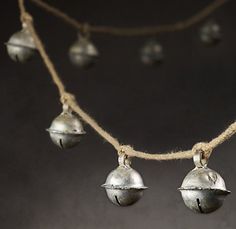
ring bells to drive away demons that surfaced during the cold dark winter.
167 notes
·
View notes
Text
Simple Yule Ritual for Beginners
Materials Needed:
Dirt from the land you live on (to represent the Earth)
A candle (bright yellow to represent fire, and the sun)
Water (to represent, of course water. From your tap is fine)
Incense (to represent air. Any scent you feel is appropriate will do)
An evergreen branch (small or large will do)
A small offering to the Reborn God (incense, something handmade by you, a string of beads, ect)
And most important, a quiet ritual space where you will not be disturbed.
Additional materials, such as pinecones, antlers, flowers, ect can be added to the ritual space as desired. I usual have many things around me, that have special meaning to me, but this is meant to be a very simple ritual for the newcomer, so I will forgo adding more than needed.
Steps
Place the Earth element in the North, the Air in the East, the Fire in the South, and the Water in the East. Try to place them so that you can reach each of them easily from one position. This can be on a small table, a tree stump, or the ground. If you wish, cover the area with a cloth that you will only use for ritual to help put you in the right frame of mind for it. Light the Fire candle, and meditate on what Yule means to you. If you are still learning, and are not quite sure of what it does mean to you, read this- http://www.angelfire.com/ca5/witchcraftstudies/yule.html
After meditating, pick up the bowl of Dirt, and say (or think), “I am of this Earth, forever linked to the Gods.” Draw a pentacle in the dirt. Replace.
Next pick up the Incense, drawing a pentacle in front of your with it say, “This is the breath of the Gods, which gives me life.” Replace.
Picking up the candle, say, “This is the Flame that warms our heart, just as the love of the Goddess and the God warms our souls.” Replace.
Last, pick the bowl of Water up, and say, “And this the ever-changing waters and nourishes life, without which we would not be.” Replace.
Think on the God’s rebirth, and the lengthening days that follow the Winter Solstice. Say what is in your heart at this time to the Goddess and the God. If you are in a situation that you are not comfortable to speak aloud, then think those words.
Next, take the offering you are giving to the Gods up in your hands, hold it to the sky and say, “This is my gift to you, for you have given many gifts to me. This symbolizes my pledge to you.” Replace. Add why to this why you chose this offering.
Now for the closing of your ritual. Take up the Earth again, saying, “Thank you for watching over my rite.” Pour the dirt back onto the ground if outside, if not, wait till you are completely finished then do it. Say the thank you for each of the elements. Pour the water out onto the ground as well. Take your offering to a favorite tree or plant of yours, and either place it on the branches where it won’t be disturbed, or bury it near the roots. Place the incense under/over the offering, and leave it to burn itself out. Take the candle inside, and place in a window. Let it burn all the way out. (Make sure there aren’t any curtains or other flammable materials nearby that could catch fire. Be safe.) Spend the rest of the day aware of the significance of the day.
If you have any changes that you would like to make for yourself in this ritual, go ahead. Paganism is a living religion, always growing and expanding. To the new person, I would suggest keeping it as simple as possible. This is why you will not see the usual tools, such as the knife or a circle used here. It is not needed. They have their purposes.
Go with the Gods, Blessed Be.
(x)
104 notes
·
View notes
Photo

Celebrate the Winter Solstice with this Yule Offering, hand selected and packaged with love by Love Tree staff. The hand-blended solid incense mixture has been cleansed in two singing bowls, and charged with positivity, good tidings and Yule blessings to help you manifest the best of success and abundance in the coming year!
Charcoal blocks are used to burn non-combustable incense, in raw, resin or powdered form. To use, place a charcoal block on a heat-proof surface. Light the edge of the block, and leave the whole thing to burn until grey. Place the powder or resin on the block, and enjoy! Make Magic Happen HERE
44 notes
·
View notes
Text
Yule Oracle
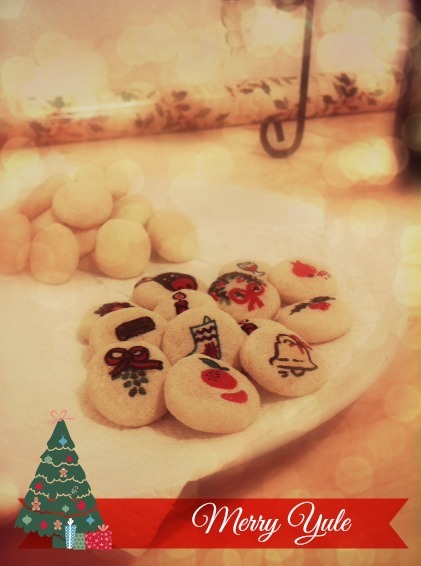
Yule is nearly upon us and we have little time to find the last perfect gifts :) So, let’s craft! Yes, because, peeking on the web, I found a very interesting idea about an oracle made of salt dough.
In theme, beautiful and above all ECONOMIC …
Below you will find the procedure I used to compose this beautiful Yule Oracle !!
Ingredients for the dough:
1 Cup of salt
1/2 Cup of water
1/2 Cup of glue
1 Cup of flour
1 teaspoon of oil
Materials for decorating:
Permanent markers
Oracle bag
Enthusiasm!
Procedure:
First of all, you need to prepare the salt dough, you have to mix it up well to dissolve the salt.

Then, pinching the dough, you must create balls with a diameter of 2 cm more or less, you have to crush it slightly to facilitate later the design on one of the sides.

Allow for a little drying by air and then bake the figures in the oven for half an hour at 50ºC (122ºF). You can Increase to 100ºC (212ºF) after the initial half hour if more time is needed.
When everything is cooked, you have to let stand the pieces of your oracle in a warm, dry place until the dough will be dry and tough.
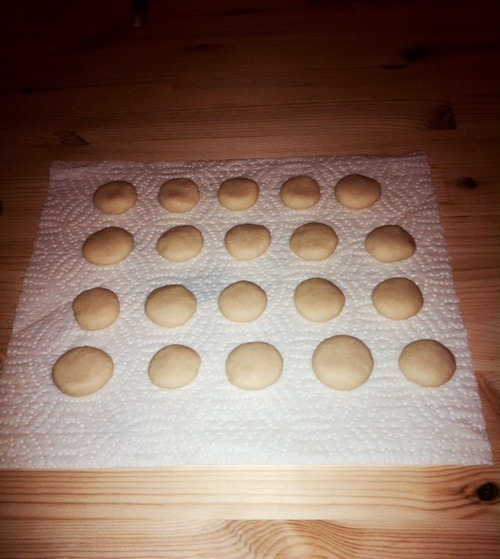
At this point leave space to your creativity and decorate the pieces with the following 12 symbols: mistletoe, holly, orange, pomegranate, garland, Yule log, bell, Rudolph, candle, Wassail, poinsettia.
How to read the oracle:
Mistletoe: indicates a serene period, strong protective cover, communion with the deity; if reversed causes you to reflect on your situation, you should protect yourself, and you probably need a job to regain contact with the deity.
Holly: indicates that you have all it takes to break the problems down, you will experience a propitious and fruitful period; if reversed there could be someone pulling against you, it is a good idea to protect yourself.
Orange: indicates a link with good things that come from the other (“giving and receiving”), so expect some pleasant surprise from a relative or friend; if reversed may indicate that you haven’t behaved well with others or that you have some debt to pay.
Pomegranate: indicates rebirth, resurrection, renewal; reversed indicate a period not favorable, you may need to postpone projects to more propitious times.
Wreath: indicates that you should stop to think and reconsider your position, you need to scan your time and give you goals to aim for; If reversed, the meaning doesn’t change because it is a circular symbol.
Yule Log: indicates that you can leave behind things unfinished and problems. Dwell on the past will not bring anything good to you, you need a new beginning; reversed can mean that you continue to stay connected with the past and if this will not change then you will not make progress on any level of your life, you have to implement some transformation!
Christmas Bells: are an invitation to review the scale of your values. Are you the person that you’d like to be? do you operate in the right way? do you live in harmony? are you on the right track? If the answers are not what you hoped for, then you need a purification or a departure from what affects you in the wrong way.
Rudolph: indicates that you already know within you the answer to your questions, so continue in this direction because this is a sign that the road you want to take is illuminated; if reversed then you have to stop for a moment and consider the possibilities, the road to take is still unclear, perhaps you need a help to selecting the right one.
Candle: symbolizes a serene period, because the light of the candle illuminates your path; if the candle is reversed it’s to be considered as off and could symbolize that your spiritual journey does not proceed as expected.
Christmas Stocking: indicates that you need a help, a bit of luck to propitiate your lot. Reversed, the sock is empty, there is no prosperity luck or help except what you can give to yourself, in this case you can propitiate good luck sewing a sock for yourself.
Wassail: give thanks and make a toast to yourself for your victories. If they have not already arrived, they will not be long in coming; reversed means you probably put so little effort into what you do that you haven’t achieved any goal. So think and try to understand for what it’s worth to exploit your energy.
Poinsettia: indicates a period full of beautiful things, good feelings and satisfaction. Your path proceeds in the best way and what you do is recognized and taken into account; reversed is a symbol of sacrifice, of disappointment, a period of loneliness and sadness.
Merry Yule & Blessed be !!
353 notes
·
View notes
Text
Yuletide slaw
4 cups red cabbage, shredded ¼ cup lemon juice ½ teaspoon black pepper, coarse ground 1 teaspoon salt ½ cup green onions, chopped 2 teaspoons sugar ¼ cup salad oil 2 tablespoons parsley 1 Green bell pepper, chopped Combine and toss the vegetables together. Mix salt, pepper, salad oil, lemon juice, sugar and parsley and pour over the vegetable mixture. Refrigerate for 1 hour, Toss briskly before serving. Makes 8 servings.
↢ Back to Yule - Winter Solstice
67 notes
·
View notes
Text
High Protection Winter Tea
This is a magical tea to fight freezing cold, germs and dark thoughts!
Ingredients:
3 big pieces of fresh ginger (cut into thin slices) 5 teaspoons of honey* 1 squeezed lemon juice ½ squeezed orange juice 1 teaspoon of loose dried thyme leaves 1 handful of fresh rosemary 1 pints of water (filtered!)
*All organic honey brands are of a high quality. My favorite honey is chestnut honey, mainly for its intense nutty flavor that I particularly enjoy but also because it actually helps blood flow. This really works!
Heat water (don’t boil it). Add the ginger slices and the rosemary. Let the mixture infuse during 5 minutes and strain. Add the lemon and the orange juices. Heat it a tiny little bit (but don’t boil!) so that the juices don’t make it colder. Add the honey and mix. Keep the tea in a thermos bottle and drink two to three mugs a day.
[x]
4K notes
·
View notes
Text
Yule
Prayers:
Prayer to the Winter Goddess
A Prayer to the Earth at Yule
Prayer to the Sun God
A Nordin Yule Blessing
A Celtic Yule Blessing
Rituals:
Blessing your Yule Tree
Family Yule Log Ceremony
Recipes:
Wassail
Old-World Manicotti
Yule Log
Yule Moon Cookies
Yule Mule Cocktails
Craft:
Yule Craft Ideas
Yule Pomander Magic
Yule Oracle
Oracolo di Yule
Altar:
Yule Altar Ideas
5K notes
·
View notes
Text
Wassail
A fine way of serving wassail is to put an apple in each mug and ladle the hot brew over it. Provide each of your guests with a spoon so they can eat the apple afterwards.
Ingredients:
12 small tart apples
6 pints ale
2 cups brown sugar
2 tsp ginger
2 tsp cinnamon
2 tsp nutmeg
4 whole cloves
Zest of 2 lemons
2 pints red wine
Peel and core the apples, and dry roast them (no sugar) in a slow oven until they almost burst. (Low and slow and keep an eye on them.) Combine 1/3 of the ale with sugar, spices, and lemon zest. Summer over low heat for 20 minutes. Add remaining ale and wine and heat, but do not boil. Serve hot over the apples.
Serves 12.
[Source: Celtic Folklore Cooking, Joanne Asala, Llewellyn, 1998.]
2K notes
·
View notes
Text
Yule Incense Recipes
Recipe 1:
Frankincense
Myrrh
Clove
Juniper berries
Cinnamon Oil
Recipe 2:
Pine needles or Resin
Cedar
Cinnamon
Clove
Orange Oil
Recipe 3:
Frankincense
Cedar
Clove
Ginger
Chamomile
Orange Oil
932 notes
·
View notes
Text
Faeries
How to tell if a faerie is near by:
Feeling a warm tingles across your skin.
Things go missing and then reappear somewhere else in your home.
You see things out of the corner of your eyes.
Finding yourself participating in child like activities like skipping or swinging on a swing set.
You come across random floral scented breezes.
You make a habit of bringing nature inside.
You find yourself admiring insects and when you find one in your home you set it free instead of squishing it.
You find yourself stumbling over faerie circles.
You are followed by a crow or raven.
You hear mysterious giggling.
You find large patches of four-leaf clovers.
Offerings for the fae:
Milk and Honey
Anything small and shiny
Rings
Beads
Rocks
Crystals
Cream
Sweets
Cakes and Cookies.
Clean water
Some Favorite Faerie Rocks:
Tigers eyes
Peridot
Jade
Volcanic Rock
Fluorite
Emerald
Plants that attract faeries:
Common yarrow
New York aster
Shasta daisy
Western giant hyssop or horsemint
French lavender
Rosemary
Thyme
Fountain butterfly bush
Orange-eye butterfly bush
Summer lilac
Shrubby cinquefoil
Common garden petunia
Verbenas
Pincushion flowers
Cosmos
Common zinnia
Foxgloves
Pansies
Clover
Toadstools
Bluebells
Rowan
Oak
Alder
Willow
Birch
Apple trees
Sources: earthenergyhealing.com, mysticfamiliar.com, and earthwitchery.com.
==Moonlight Mystics==
14K notes
·
View notes
